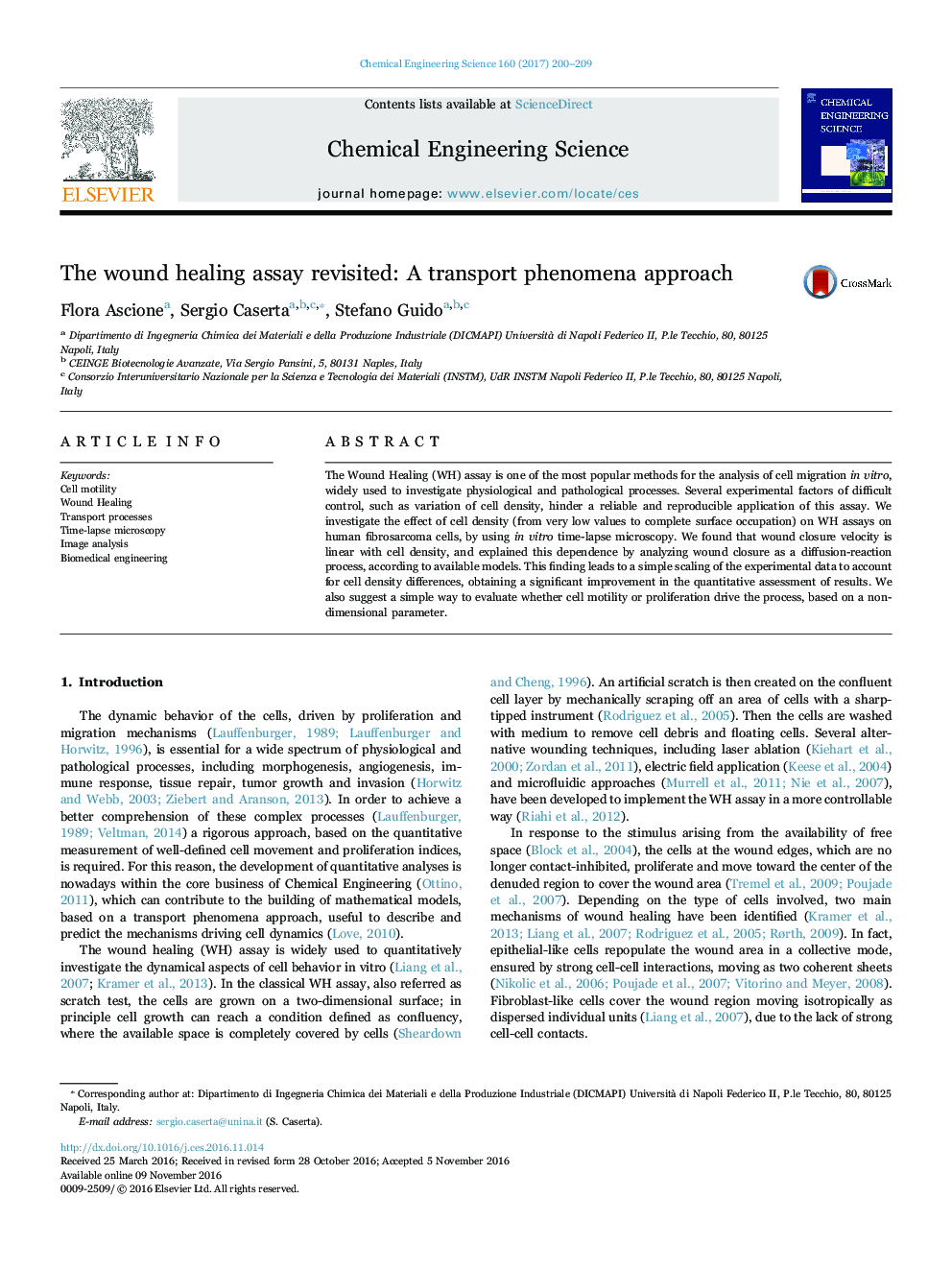| Article ID | Journal | Published Year | Pages | File Type |
|---|---|---|---|---|
| 6467754 | Chemical Engineering Science | 2017 | 10 Pages |
â¢We revisited the methodology typically used to quantify the wound healing assay.â¢Heterogeneous cell density among the samples limit experimental reproducibility.â¢Wound closure is analyzed as a diffusion-reaction process.â¢A data scaling based on cell density improves the experimental reproducibility.â¢Non-dimensional analysis can identify motility and proliferation contributions.
The Wound Healing (WH) assay is one of the most popular methods for the analysis of cell migration in vitro, widely used to investigate physiological and pathological processes. Several experimental factors of difficult control, such as variation of cell density, hinder a reliable and reproducible application of this assay. We investigate the effect of cell density (from very low values to complete surface occupation) on WH assays on human fibrosarcoma cells, by using in vitro time-lapse microscopy. We found that wound closure velocity is linear with cell density, and explained this dependence by analyzing wound closure as a diffusion-reaction process, according to available models. This finding leads to a simple scaling of the experimental data to account for cell density differences, obtaining a significant improvement in the quantitative assessment of results. We also suggest a simple way to evaluate whether cell motility or proliferation drive the process, based on a non-dimensional parameter.
